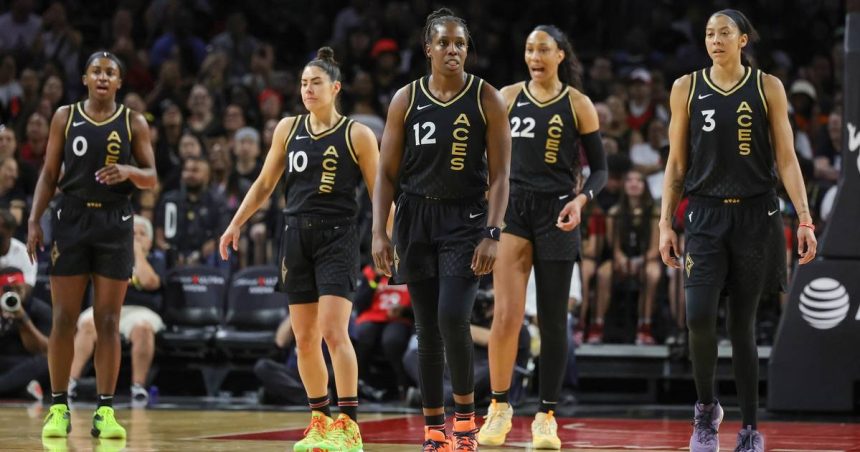If you build it, brands will come. At least, that’s the hope of many sports marketers—especially those focused on women’s sports.
It’s been a big week month year for women’s leagues and teams. Case in point, just this past weekend, the New York Liberty and the Las Vegas Aces had the largest-ever gate attendance for a WNBA Finals game, while the University of Iowa drew more than 55,000 fans to an exhibition game, the biggest crowd yet for any NCAA women’s basketball game.
“I keep hearing about how women’s sports is having a moment, and I really dislike that phrase,” Deidra Maddock, VP of sports brand solutions at Disney Advertising, said during a panel at Advertising Week New York. “I think it’s much more than a moment. It is a movement, and there is momentum…If we can keep that collective momentum building, it’s almost impossible to predict where we will be three years from now, but I think the sky’s the limit.”
Despite the growing size of the women’s sports audience, several execs across brands and agencies at Advertising Week acknowledged the barriers to entry marketers that want to tap into that audience can face—as well as the ways those barriers are being dismantled.
Cold feet?
Brands spend an average of 9% of their total media budget on women’s sports, according to a recent report from fan intelligence company Sports Innovation Lab. More than three-quarters (83%) of agency and brand representatives surveyed said they plan to up that spend next year, but about two-thirds said they were only planning for an increase of between 1% and 10%.
“In the performance space, it’s very challenging sometimes to get clients to try new things, because they’re very focused on their ROI,” Michelle Cardinal, co-founder and chairwoman of Rain the Growth Agency, said during a panel on Tuesday. “Every dollar that they spend has to drive sales, responses, engagement, conversions, and so forth.”
Rain uses case studies and data to help convince clients to invest more, Cardinal told Marketing Brew, and then starts testing with smaller budgets. “I think between $100,000 and $150,000, we can really get a feel for whether we’re going to take them to the next level…I could probably do something with $50,000 if a client said, ‘Look, we want to test,’” she told us. Eventually, the hope is to increase that budget into the range of a few million dollars, she said onstage.
Where’s the money, Lebowski inventory?
Even when brands do decide to spend on women’s sports, it isn’t always immediately—or easily—doable, several execs said onstage. Julia Cheney, cultural marketing lead for Google’s devices and service team, said when she first started looking into spending equally on men’s and women’s sports, “there wasn’t the inventory for us to make the spend equitable.”
Get marketing news you’ll actually want to read
Marketing Brew informs marketing pros of the latest on brand strategy, social media, and ad tech via our weekday newsletter, virtual events, marketing conferences, and digital guides.
Andrea Brimmer, chief marketing and PR officer of Ally Financial, which last year publicly committed to spending equally on men’s and women’s sports by 2027, said some media companies have offered to “unlock the women’s sports media for free” if she spent a certain amount on men’s sports. It was “insulting,” she said. “We didn’t want it for free. We wanted to pay for it.”
Sara Gotfredson, founder of women’s sports media advisory group Trailblazing Sports Group, said in those cases where there is limited availability, brands can “ask their media partners to help create new inventory opportunities.” That’s what Disney and ESPN did earlier this year when it introduced its Level Up initiative designed to encourage brands to spend more on women’s sports.
“Brands are raising their hands and saying, ‘Hey, we want to be involved, we intentionally want to be in women’s sports,’ and we want to facilitate that for them, and then recognize them for that intent,” Maddock said. “Fans notice when brands show up with intent to support women’s sports, and they reward that intent with intent of their own. They will turn around and intentionally support that brand, because they noticed that they showed up.”
Read the full article here










